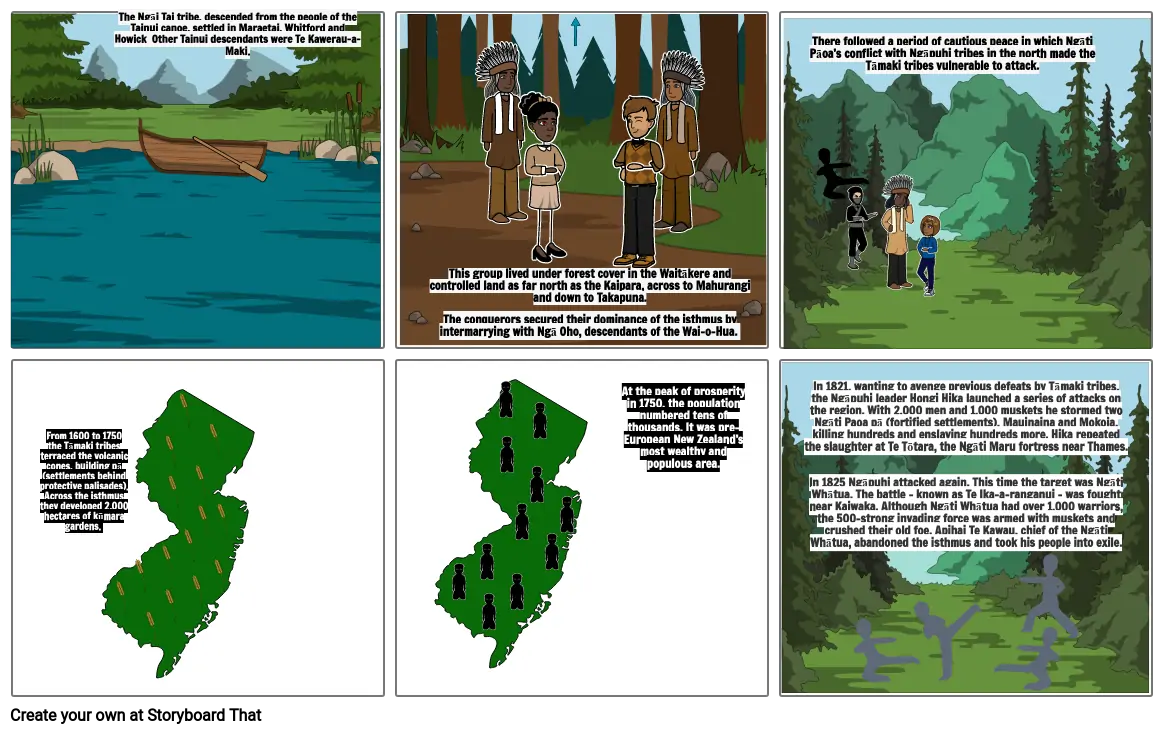Maori

Storyboard Text
- The Ngāi Tai tribe, descended from the people of the Tainui canoe, settled in Maraetai, Whitford and Howick Other Tainui descendants were Te Kawerau-a-Maki.
- This group lived under forest cover in the Waitākere and controlled land as far north as the Kaipara, across to Mahurangi and down to Takapuna. The conquerors secured their dominance of the isthmus by intermarrying with Ngā Oho, descendants of the Wai-o-Hua.
- There followed a period of cautious peace in which Ngāti Pāoa’s conflict with Ngāpuhi tribes in the north made the Tāmaki tribes vulnerable to attack.
- From 1600 to 1750 the Tāmaki tribes terraced the volcanic cones, building pā (settlements behind protective palisades). Across the isthmus they developed 2,000 hectares of kūmara gardens.
- At the peak of prosperity in 1750, the population numbered tens of thousands. It was pre-European New Zealand’s most wealthy and populous area.
- In 1821, wanting to avenge previous defeats by Tāmaki tribes, the Ngāpuhi leader Hongi Hika launched a series of attacks on the region. With 2,000 men and 1,000 muskets he stormed two Ngāti Paoa pā (fortified settlements), Mauinaina and Mokoia, killing hundreds and enslaving hundreds more. Hika repeated the slaughter at Te Tōtara, the Ngāti Maru fortress near Thames. In 1825 Ngāpuhi attacked again. This time the target was Ngāti Whātua. The battle – known as Te Ika-a-ranganui – was fought near Kaiwaka. Although Ngāti Whātua had over 1,000 warriors, the 500-strong invading force was armed with muskets and crushed their old foe. Apihai Te Kawau, chief of the Ngāti Whātua, abandoned the isthmus and took his people into exile.
Over 30 Million Storyboards Created

